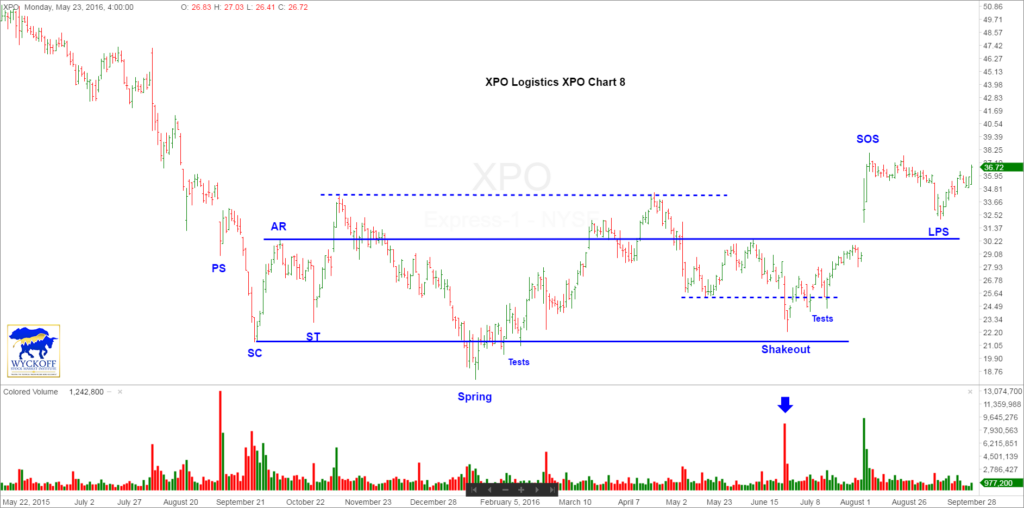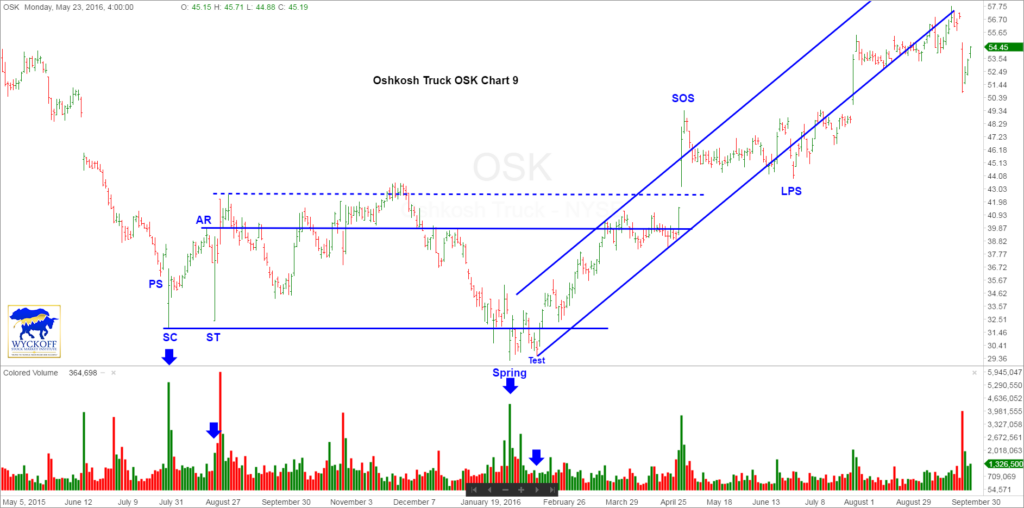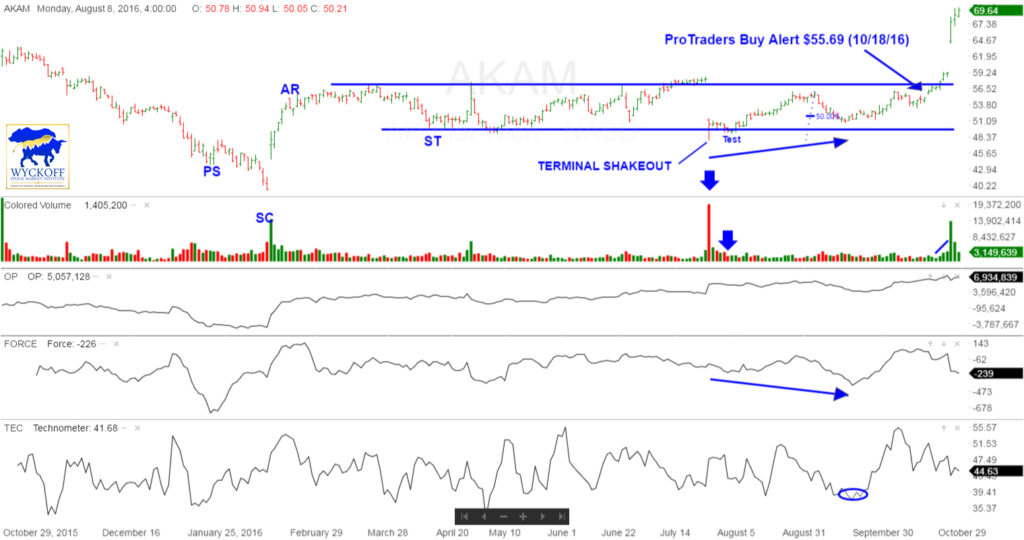After the stock market or an individual issue has been in a spring position and has responded to the spring with a rally, there is likely to be a test of the spring. The test provides supply with a second opportunity to come pouring into the market to crush the price and begin a sustained decline. In these cases, the test is said to have failed.
However, in those cases where supply does not take control of the action, the test is said to have been successful. These are the tests that Wyckoff traders want to consider buying. As was the case with the spring position, successful tests of springs are likely to be followed by a rally. Most of the time, the response to the test of a spring takes the price to a higher level than was recorded on the initial response to the spring. Sometimes, the higher high is much higher
The quality of a test of a spring and its desirability as an entry point on the long side are determined by price spread and volume. A high quality test is one that unfolds on narrowing price spreads and decreasing volumes. The ideal test is one where the average volume as the test develops is less than the average volume that was seen during the days leading to the spring position.
The same is true with the price spreads. A high quality test will unfold on price spreads that on average are narrower than those leading to the spring. A third factor to consider in determining the quality of a test is where the low point of the test is in relationship to the low point of the spring. A high quality test will put in a higher bottom than was recorded on the spring.
Not all tests are of high quality. However, not all lower quality tests fail. There are three ways in which a test can reveal itself to be of questionable quality. One is by making a lower low than the spring. This is a concern especially for the trader who took an initial position on the spring because it provides supply with another opportunity to step up and take control of the action.
A test can also be considered to be of lower quality if the average volume on the test is greater than it was on the development of the spring. The lowest quality tests are those that make a lower low than the spring and are done on higher volume. As a general rule, these tests should not be traded. The risk of the test failing is too great if it is of the lowest quality.
With some tests ending well above the low point of the spring while others more nearly reach the low point of the spring and still others make new lows, it can be difficult to judge exactly where the test will end and where a position should be established. There are guidelines to consider in making these decisions. One is the halfway point of the response to the spring. Since it is normal for a bullish rally to be followed by a halfway correction, the halfway point of the response to the spring can be used a place to open a position.
Another level to consider is the support level that was sprung. If the price respects that support level on the test, it is indicating that a position can be justified. A third level of importance is the support level defined by the low point of the spring. This is the lowest level at which a position should be seriously considered.
Those tests that are judged to be of lower quality either because of a lower low, higher volume or both will likely be tested again at a later date assuming they do not fail. These are usually referred to as being more important tests. Their quality is also determined by price spread, volume, low point and by a fourth factor. As with the initial test, the Wyckoff trader is looking for narrower price spreads, lower volumes and a higher bottom on the more important test.
The fourth factor to consider is whether the response to the first test put in a higher high than the initial response to the spring. The ability to make a higher high on the response to the first test indicates that the bulls are willing to follow the price higher. If a more important test exhibits all four factors mentioned, it can be considered to have corrected the problem or problems that were present on the first test and taking a position can be considered.
The disciplined Wyckoff trader will never take a position without at the same time placing a stop or buying some insurance. When a position is taken on the test of a spring, it is important that the stop be placed below the low point of the spring to keep the stop from being vulnerable. If the potential indicated by the figure chart is not sufficient to allow the stop to be placed below the low point of the spring, a position should not be taken. The determination as to whether the stop can be placed below the low point of the spring is based on how many points are being risked and how many points of potential profit are indicated. At least three points of potential profit should be indicated for each point that is risked.
Some Wyckoff traders choose to take their full position on the spring. Some choose to take their full position on the test of the spring. Both groups are taking more risk than those who choose to take only a partial position on the spring and then adding a second partial position on the test. The goal is to build a winning position as the action unfolds. After the test of the spring, there are two additional opportunities that may provide places to add other partial positions.




